Do you know what type of smoke alarms you have in your house? There are two basic types of residential smoke alarms – ionization and photoelectric. The vast majority of smoke alarms in use today are the ionization type, but they’re being questioned more and more as a valid detection method; today they’re no longer allowed as the only type of residential smoke alarms in Iowa, Vermont, and Massachusetts.
Why all the bad press about ionization smoke alarms?
One of the major problems with ionization smoke alarms is that they give off too many false alarms – mostly from cooking and showers. When a smoke alarm goes off every time someone cooks bacon, people remove the battery or take down the smoke alarm. Manufacturers require them to be installed away from kitchens and bathrooms, but there is no hard and fast rule for clearance requirements across different manufacturers. Some cities, such as Minneapolis, have implemented even stricter requirements for ionization smoke alarms; they require smoke alarms that are within 20′ of a cooking appliance to either be of the photoelectric type, or to have a hush button.
Recent statistics show that in 24% of home fire deaths, smoke alarms were present but did not sound; in half of those cases, there was a missing or disconnected battery. This is a common problem that I find all the time while doing Truth-In-Sale of Housing evaluations, and the reason people always give is that the smoke alarm goes off every time they cook or shower.
The other problem with ionization smoke alarms is that they take a long time to respond to a smoldering fire – they’re tens of minutes slower than photoelectric alarms (page 17). Estimates show that at least one third of home fatal fires involve a significant smoldering period (page 14). This is the major reason that there is such a push to replace ionization smoke alarms with photoelectric smoke alarms. The diagram and text below comes from a handout published by the CPSC, showing how a photoelectric smoke alarm will give occupants much more time to escape in the event of a smoldering fire.
In the event of a smoldering fire, a photoelectric smoke alarm clearly outperforms the ionization type. So why do we even have ionization alarms? The main reason is cost. Photoelectric smoke alarms typically cost about twice as much as the ionization type. The other reason is that ionization smoke alarms will outperform photoelectric alarms in the event of a fast moving fire. The faster reaction time can be measured in tens of seconds, but in the event of a fast moving fire, these are precious seconds. The diagram below, again from the CPSC, helps to illustrate this.
Most Smoke Alarms are the Ionization Type
I’ve been hearing more and more about this push, but after recently listening to an impassioned speech on the benefits of photoelectric smoke alarms over ionization alarms, I started taking an informal inventory of the smoke alarms that are installed in Minnesota homes. Over the past few weeks, I’ve taken a close look at every smoke alarm in every house I’ve inspected to get an idea of what’s the most common type used in Minnesota. Out of the dozens of smoke alarms I’ve looked at, I found one dual-sensor smoke alarm, which employed both ionization and photoelectric technologies. The rest of the smoke alarms were the ionization type only. I didn’t come across a single photoelectric unit.
To know the difference between ionization and photoelectric alarms, you need to take the smoke alarm down and look at the back. Ionization alarms all contain a trace amount of a radioactive material, Americium 241. They’ll all have a warning about this on the back side. Click on any of the thumbnails below to see a blowup of the text on the back side of a smoke alarm – I marked up the labeling that indicates these are ionization alarms in every photo.
Minnesota Requirements
Minnesota currently has no specific requirements when it comes to ionization vs photoelectric smoke detectors. Smoke alarms are generally required in bedrooms and in common areas on every level of the home in Minnesota, and they need to be hardwired and interconnected when possible. You can read the full requirements for smoke alarms in Minnesota here.
My Recommendation
I recommend installing both photoelectric and ionization smoke alarms, or smoke alarms that use both technologies called dual alarms. Some people argue that these alarms shouldn’t be used because there could be more nuisance tripping due to the ionization sensor, which would cause the occupants to disable the smoke alarm. While this is obviously a possibility, proper placement of smoke alarms and better education about how they operate is the best way to make a home safer.
Post update 7/16/13: I recommend photoelectric smoke alarms. The sensitivity level of the ionization sensor in dual-sensor alarms is often reduced by manufacturers to give little to no benefit.
Post update 11/6/12: Here’s another recent news clip: http://whnt.com/2012/07/16/smoke-detector-fail-a-taking-action-investigation/
Post update 3/18/13: Here’s a presentation given by Skip Walker on ionization vs photoelectric smoke alarms.
Post update 11/16/14: Here’s a local news story on photoelectric vs. ionization smoke alarms, done by CBS:
Reuben Saltzman, Structure Tech Home Inspections – Email – Minnesota Home Inspector
Quick link: Determine type of smoke alarm



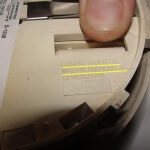
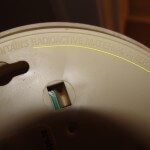
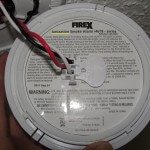
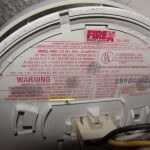
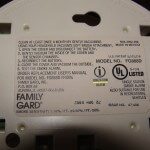
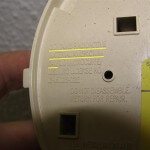
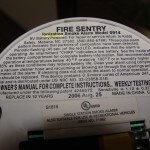




Reuben
April 10, 2012, 8:17 am
I wonder if a better-designed hush button could go a long way towards reducing people removing batteries. I think people remove batteries because hushing them while cooking bacon is a pain. Hush buttons are usually small buttons, hard to push if you’re reaching from the ground with a broom handle or something. Also, do most people know that alarms have hush buttons or do they think the only way to quiet them is to remove the battery? What if nearly the entire face of the detector was a giant hush button? What if there was a way to hush it without reaching up to the ceiling? Maybe a collaboration with “The Clapper” would be a good idea (clap twice to hush). Maybe an unobtrusive button on the wall at an easy-to-reach height can hush the alarms via wireless?
Reuben Saltzman
April 10, 2012, 9:57 am
Wow, those are simple ideas that would probably go a long ways towards making smoke alarms much safer. Now that you say it, just wait. We’ll start seeing this within the next year.
Karen
October 11, 2012, 5:09 am
Are most smoke alarms that were installed with a security system (like adt) of one type or the other?
Jill Lloyd
October 12, 2012, 12:40 pm
Most reputable alarm companies will install photoelectric smoke detectors. They are available in both wired and wireless technology.
Reuben Saltzman
October 12, 2012, 7:26 pm
Thanks Jill!
@Karen – when it comes to alarm companies, I consider Jill an authority on the matter.
Is Your Smoke Alarm Really Safe? « Home Security St. Paul « Lloyd Security- Security that doesn't sleep
November 2, 2012, 11:30 am
[…] good friend of mine, Ruben Saltzman is a Minnesota Home Inspector. He has written a wonderful article about the pros and cons of ionization and photoelectric smoke alarms. I urge you to read his post and see his recommendations about the […]
Howard
April 5, 2013, 12:19 pm
I knoe this is old. But looking at the linked NFPA study (p17) I don’t see where ion detectors are “tens of minutes slower” than photo. Which of the figures do you refer to? In all the NFPA test both types were very close, and both are required to be withing certain times for the UL certification.
Kiddie sell a battery operated wireless interconnected detector I’m looking at, but it’s only ionizing. Since I’m in an existing home re-wiring would be difficult. I would probably supplement with dual sensor detectors in the hallway for instance
Reuben Saltzman
April 5, 2013, 8:03 pm
Hi Howard, on page 17 of the referenced link, it says this about halfway down the paragraph:
Also, check out pages 108 – 111 in this presentation: http://www.structuretech1.com/wp-content/uploads/2013/03/Ion-vs-Photo-Smoke-Alarms-CREIA-April-20121-1.pdf
Sidney Davis
April 15, 2013, 5:24 pm
Retired Albany Fire Chief Marc McGinn has taken quite a stand on this issue. See the following link.
http://www.sfgate.com/bayarea/article/Albany-fire-chief-urges-switching-smoke-alarms-3178563.php
Mike Cocci
April 18, 2013, 9:48 pm
Almost 40 years ago, The Gillette Company laucned a product line called Captain Kelly which featured Photo Electric Smoke Detectors. They had a RV that was used to present the the Photo Electric system vs Ionization and took people through an actual demonstration of how much smoke (4%) was necessary to trigger the Ionization alarm. Inhaling 2% smoke will kill you very quickly. This data was available 40 years ago, but state governments refused to enact any meaningful legislation. How many people died because of lobbying against requiring these systems vs the Ionization type?
Photoelectric smoke alarms are all you need | Structure Tech Home Inspections - Part 1
July 16, 2013, 4:14 am
[…] If you’re curious about what type of smoke alarms you have in your own home, click here for info on how to determine what type of smoke alarm you have. […]